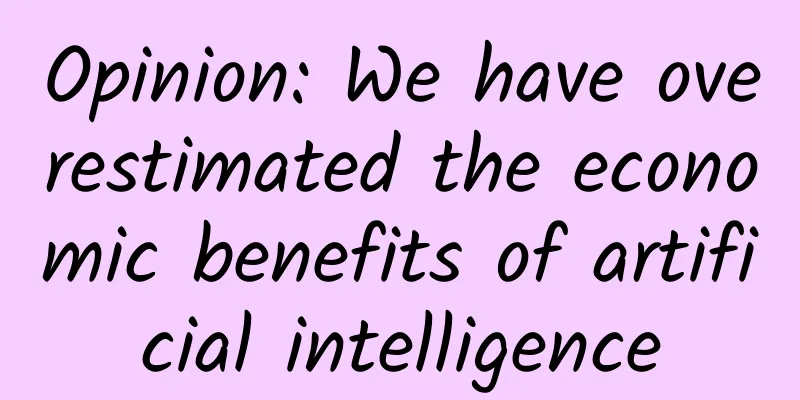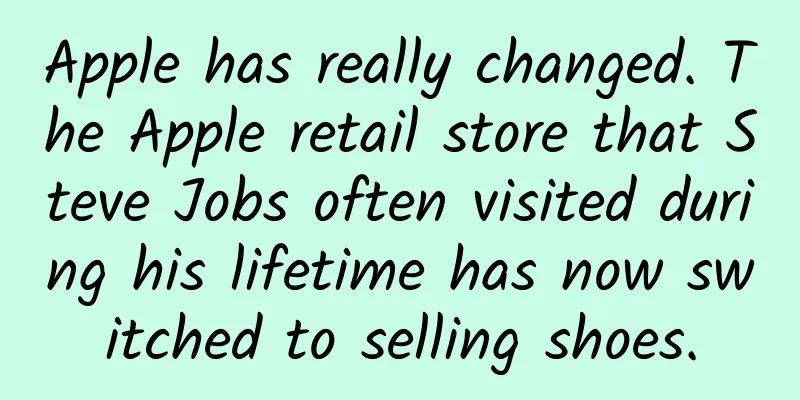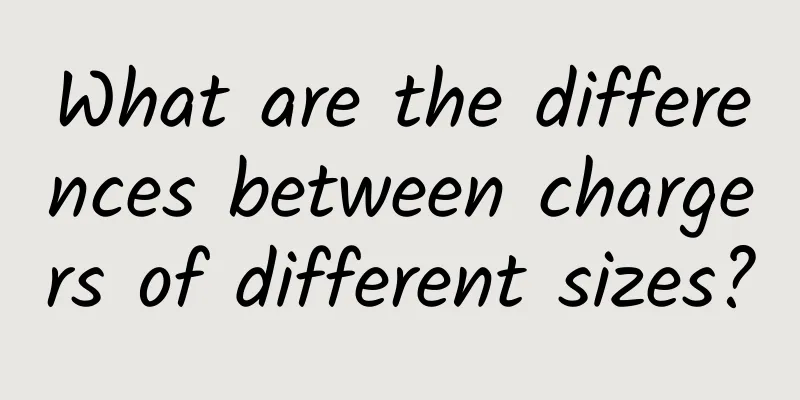Opinion: We have overestimated the economic benefits of artificial intelligence

|
The impact of technology on productivity growth has long been overstated. Will analysts make the same mistake with generative AI? The big shift in productivity is driven by cost reduction. While generative AI can do this, its possible macroeconomic impact should not be overstated; Many companies will be losers as cost leaders gain, but the real winners will be consumers as technology drives prices down. The breakneck pace of technological progress in recent decades has also failed to lift growth rates in advanced economies such as the United States. During the pandemic, many were eager to declare that the accelerated adoption of digital services would be a turning point. But as we wrote then (and since), a strong impact of digital services on growth was unlikely to materialize, and ultimately did not. Understanding technology’s past regrets can help clarify its future potential. One reason digital technologies have been so mediocre at boosting economic growth is that they can only serve as a fuel. Productivity growth requires other sparks to ignite effective technology adoption. The continued tight labor market could be that spark. Because companies are induced or forced to replace labor with technology when they can’t recruit people. In the 2010s, the labor market remained weak, and companies had no incentive to reshape their production processes. But since the COVID-19 pandemic, the labor market has become tight again, which could bring a new spark. One obstacle facing companies in increasing productivity is the lack of technology that can fully replace labor, especially in labor-intensive service industries. Automation in manufacturing lacks a corresponding technology in the service industry, which relies on non-standardized, reciprocal human interactions. Generative AI has the potential to change this to some extent. But to realistically measure its likely impact, we must look more closely at the mechanisms that translate technology into broad productivity gains. Focus on cost and price, not the app Productivity growth is often attributed to product innovation enabled by the miracle of technology. The big shift in productivity, while important, is driven more by massive cost reductions than by new or improved products. The deflationary nature of technology is a powerful macroeconomic driver. People often mistakenly focus on the dazzling apps instead of focusing on costs. We can use the story of the taxi industry to illustrate. Uber, Lyft and Grab may be the epitome of driving social progress, but is productivity in the taxi industry really increasing? All first-year economics students should know that productivity growth is to increase the ratio of input to output. Apps have not fundamentally changed labor and capital inputs. For the taxi industry, this means that the drivers and cars themselves have not changed, but the matching rate between drivers and passengers has improved. But today's rising taxi prices show that productivity has not changed. If it has changed, taxi prices should fall. Why does this happen? When companies replace labor with technology, they are able to lower product prices and take market share from higher-cost competitors. When this process unfolds across industries and sectors, the macroeconomy experiences strong productivity growth. In the transportation sector, if algorithms and sensors replace drivers, productivity will change dramatically, not just by using apps to show drivers where they are and making mobile payments. Technology has historically failed to trigger the technology-cost-price cascade that has limited its impact on economic growth. Now, generative AI has the potential to eliminate costs in the service economy by replacing nonlinear interactions (from call centers to marketing to research and design), making it more likely to have an impact on growth. Generative AI can reduce costs, which will have macro benefits because it can trigger technology-cost-price effects. The evidence for this deflationary effect is strong. The contrast between goods and services over the past 30 years has been stark. For durable goods, automation and outsourcing have driven labor inputs and prices down dramatically. In the three decades leading up to 2020, the durable goods price index fell by 35%, while the price index for all goods rose by only 15%. The labor intensity of the service sector declined only slightly or not at all. As a result, the prices of corresponding products rose substantially: transportation prices rose by 79%, education prices rose by 348%, and service prices overall rose by 120%. Businesses, take note: Consumers are the primary beneficiaries of generative AI If reducing costs and lowering prices is the way technology achieves big productivity gains, then consumers will be the winners. Lower prices will increase consumers’ real incomes, which they can spend on other things. Think about it, food used to take up a large portion of people’s wallets, but as food prices fell (through mechanization and fertilizer), consumer income was freed up to spend on household goods and services like tourism. This is how technology drives overall growth, and why dystopian predictions of mass unemployment have not come true, because new consumption also creates new jobs. For companies, this means that the productivity cascade effect (technology-cost-price-revenue) is both a threat and an opportunity. Those companies that can lead the cost curve down, maintain their relative advantage, lower prices and capture market share will be the winners, while those that cannot do this will be eliminated. While AI has the potential to create new corporate giants or breathe new life into existing ones, some industries may see it as a threat to industry profits for all companies in the industry. This happens when labor-saving technology becomes widespread and easily adopted by all businesses. Price wars and reduced profits ensue. For example, productivity gains in the auto industry, shipping, or airlines have led not to industry-wide profit growth but to low prices, intense competition, and thin profits. The strategic implications for businesses of generative AI and other technologies are therefore both defensive (cut costs to stay alive) and offensive (cut costs to gain an advantage). Be realistic about the macroeconomic impact of AI Generative AI is an important piece of the technology puzzle that includes sensors, 5G, robotics, biotechnology, and more. It can drive productivity growth, but by how much? Great technological innovation usually leads to economic prosperity. Some recent estimates suggest that U.S. productivity growth could increase by more than 300 basis points (bps). This view is exaggerated. While it is tempting to use bottom-up case studies to make macroeconomic forecasts, such estimates are still based on assumptions and extrapolations and are exercises in nature. In reality, there will be some unknowable obstacles, such as regulatory friction and social acceptance, which will prolong the time to growth brought by generative AI and limit its impact. The 300 basis point estimate means that the generally accepted trend growth rate of the US economy would more than double, from around 2% to 5%. Some people have also predicted that the increase in digital penetration during the epidemic will increase productivity growth by 100 basis points or more, but we have seen that this is not the case. Past productivity gains offer a glimpse into the impact that technology might have. Is the current technology wave likely to be bigger, smaller, or similar to the information and communications technology (ICT) boom that drove productivity growth from the mid-1990s to the mid-2000s? In that boom, tight labor markets combined with the availability and dynamism of a new technology wave to accelerate economic growth by about 100 basis points over about a decade? As in the 1990s, a tight labor market in the United States will help accelerate technology adoption. Many innovative technologies will have great potential, but their development and effective adoption will take time. Moreover, there will be regulatory and other frictions that must be overcome along the way. We think this will make the impact of technology on growth more modest: around 50 basis points faster than 150 or 300 basis points. Generative AI has a bright future ahead of it, but will it ever become as “general” in the economy as the Internet? Perhaps someday, but it will probably take a long time. It took 30 years (starting in the late 1960s) for the boom in information and communications technology to have a macroeconomic impact. Even if the lag time for the impact of today’s technologies has shortened (a proposition that is plausible in the digital age), it has not disappeared. But remember, in macroeconomics, small numbers can have big effects. If generative AI and various new technologies can generate 50 basis points of growth, then the US GDP will increase by an additional $8 trillion over a decade (about twice the output of Germany in 2021), which is nothing to sneeze at. Source: World Economic Forum Philipp Carlsson-Szlezak Chief Economist, Boston Consulting Group Paul Swartz Director and Senior Economist at Boston Consulting Group’s Henderson Institute Francois Candelon Global Director of Boston Consulting Group’s Henderson Institute |
>>: Hacker doomsday? A brief analysis of Meizu Flyme 4 security
Recommend
Today is the beginning of the dog days. Why do the dog days sometimes last 30 days and sometimes 40 days?
"It is the dog days of summer, and the weath...
403 seconds! China's "artificial sun" has made a new breakthrough! How far are we from controlled nuclear fusion?
Produced by: Science Popularization China Author:...
The problem of invalid clicks on Tencent social ads, what are invalid clicks?
What are invalid clicks? Invalid clicks are relat...
"91 Ten Articles" - A daily must-read briefing for the new energy vehicle industry (210311)
1. Wuling Motors officially announced that actors...
Xiaohongshu Hot Note Titles (Tutorial Included)
There are too few eyes in the notes and the numbe...
Why does cancer recur and metastasize? The answer reveals a new strategy for conquering malignant tumors
There are still many mysteries in the battle betw...
How to create a hot-selling online celebrity product: channel promotion
These days I saw a comparison picture about new a...
What challenges do reptiles face when moving from land to sea?
On August 27, 2024, Jiang Dayong, professor at th...
Yan Hu's Mandala Painting Theory + Practical Painting Psychology Video Course 26 Lectures on Emotional Regulation and Self-Growth
Yan Hu's Mandala Painting Theory + Practical ...
Why smartphones aren't cool anymore
Smartphones are no longer cool. Although people a...
Android unit testing - several important issues
[[173976]] Original link: http://www.jianshu.com/...
Can sheep eat meat? Check out the weird behaviors of "eating a sheep"!
Copy review: Ran Hao, a well-known popular scienc...
Antarctic sea ice reaches record low for June, 17% below average
(Original title: World Meteorological Organizatio...
How to correctly place information flow ads?
Information flow advertising is now the new favor...
Apple apologizes to researchers for ignoring iOS vulnerability, says it's 'still under investigation'
[[426215]] According to MacRumors on September 28...









